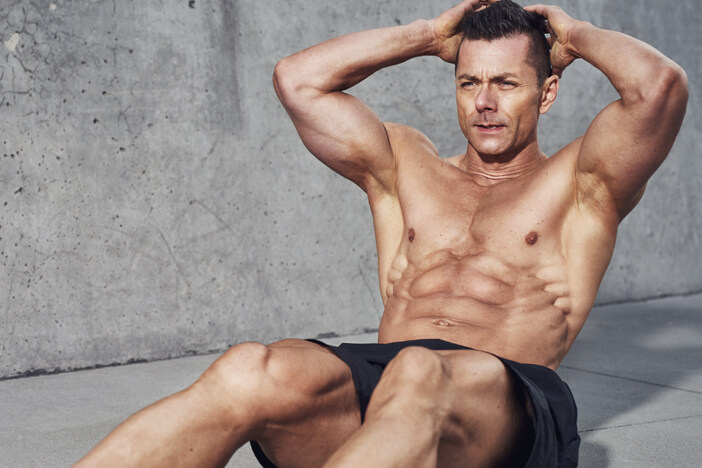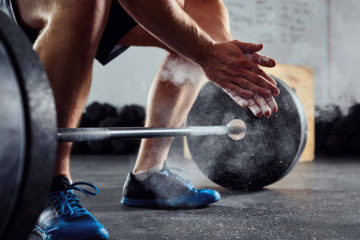Sit-ups - The classic abs exercise

Sit-ups: Targeted muscle groups
Primary muscle groups used:
- Straight abdominal muscle
- Pyramidal muscle
- Hip flexors
Secondary muscle groups used:
- Obliques
This exercise primarily involves abdominal muscles so is a great inclusion in any abdominal training programme. If you want to learn more about abdominal training in general, check out our abdominal training article.
Correct execution of sit-ups
Lie on the floor and place your legs about hip-width apart and slightly bent in front of you. Place your hands with your fingertips gently at the back of your neck without actively pulling your head forwards. Your elbows should point outwards. Now slowly lift your upper body and breathe out. Focus your gaze diagonally upwards. Your head should remain in your hands and your back straight. Keep your buttocks and abdominal muscles tense throughout the exercise to avoid your back from sinking. In order to maintain the tension in your abdominal muscles, do not lift your upper body into the full sitting position. Then lower your upper body again without lying down completely (shoulder blades may touch the floor briefly). Then begin the next repition. The entire exercise should be performed in a controlled manner.
Recommended weight for sit-ups

Classic sit-ups are performed using your own body weight.
Equipment for sit-ups
- If necessary a non-slip mat
Variations of sit-ups

Negative sit-ups on the inclining bench
For negative sit-ups on the inclining bench, lie with your back on the bench and clamp your feet into the device above your body. In this position you perform normal sit-ups. This variation is particularly demanding, because both your hip extensors and your abdominal muscles are put under greater strain due to the position of the upper body. The tension is kept permanently high due to the constant sloping position.
Sit-ups with additional weight
If you can do 30 sit-up repetitions without a problem, you can do the sit-ups with a weight plate or dumbbell that you place on your chest and hold.
V-Sit-Ups
Here the focus is on the lateral abdominal muscles. Instead of moving your upper body straight up you alternate it to the left and right. For variation you can also hold a weight in your hands.
Typical mistakes with sit-ups

- Swinging your upper body: this relieves the straight abdominal muscles, which diminishes the training effect and result. Sit-ups should therefore be carried out completely without swing.
- Crossing your hands at your neck: your head should be supported by your hands, which only happens when your hands are uncrossed. If your fingers are crossed at your neck, you tend to pull your head forward with your arms. The elbows then no longer point outwards, but also forwards. This leads to injuries in the neck and neck vertebrae.
- Bending your head forward: you should be able to place a closed fist between your sternum and chin. If this is not the case, your neck will be subjected to unnecessary strain.
In which training schedules do sit-ups occur?
You can find more tips and tricks on the topic of abdominal muscles and how you can finally achieve your dream of a firm and flat stomach in our abdominal training article.
Frequently asked questions and answers
Primary muscle groups used:
- Straight abdominal muscle
- Pyramidal muscle
- Hip flexors
Secondary muscle groups used:
- Obliques
Sit-ups should be included in your training plan at least 3 times a week. A high training frequency will give you the best results.
When doing sit-ups make sure that you do not pull your head forward with your hands, but work specifically from your stomach.



